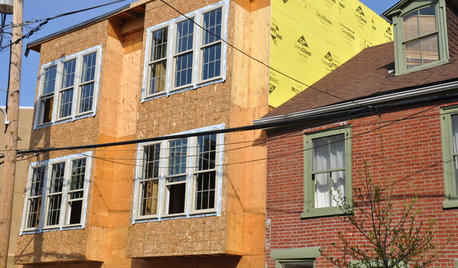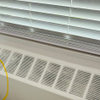HELP: is this a realistic estimate for radiant floor & geothermal
infohound2006
15 years ago
Related Stories

GREAT HOME PROJECTSHow to Add a Radiant Heat System
Enjoy comfy, consistent temperatures and maybe even energy savings with hydronic heating and cooling
Full Story
BUDGETING YOUR PROJECTConstruction Contracts: What to Know About Estimates vs. Bids
Understanding how contractors bill for services can help you keep costs down and your project on track
Full Story
FLOORSFloors Warm Up to Radiant Heat
Toasty toes and money saved are just two benefits of radiant heat under your concrete, wood or tile floors
Full Story
FLOORSIs Radiant Heating or Cooling Right for You?
Questions to ask before you go for one of these temperature systems in your floors or walls (yes, walls)
Full Story
BATHROOM WORKBOOKStandard Fixture Dimensions and Measurements for a Primary Bath
Create a luxe bathroom that functions well with these key measurements and layout tips
Full Story
WORKING WITH PROS5 Steps to Help You Hire the Right Contractor
Don't take chances on this all-important team member. Find the best general contractor for your remodel or new build by heeding this advice
Full Story
LIFE12 House-Hunting Tips to Help You Make the Right Choice
Stay organized and focused on your quest for a new home, to make the search easier and avoid surprises later
Full Story
SELLING YOUR HOUSEHelp for Selling Your Home Faster — and Maybe for More
Prep your home properly before you put it on the market. Learn what tasks are worth the money and the best pros for the jobs
Full Story
WORKING WITH PROS3 Reasons You Might Want a Designer's Help
See how a designer can turn your decorating and remodeling visions into reality, and how to collaborate best for a positive experience
Full Story
MOVINGRelocating Help: 8 Tips for a Happier Long-Distance Move
Trash bags, houseplants and a good cry all have their role when it comes to this major life change
Full Story







fsq4cw
bushleague
Related Professionals
East Lake Solar Energy Systems · Moorpark Solar Energy Systems · Prunedale Solar Energy Systems · Sanger Solar Energy Systems · West Hartford Solar Energy Systems · Moraga Solar Energy Systems · Verona Solar Energy Systems · Berkley Home Automation & Home Media · Brookfield Home Automation & Home Media · Champlin Home Automation & Home Media · Lakewood Home Automation & Home Media · Lincolnwood Home Automation & Home Media · Mount Lebanon Home Automation & Home Media · Seattle Home Automation & Home Media · Waterford Home Automation & Home Mediaklaire2001
infohound2006Original Author
klaire2001
infohound2006Original Author
infohound2006Original Author